Why Do Dust Mites Trigger Allergies?
Published on May 11, 2021 | Updated - Dec 4, 2023
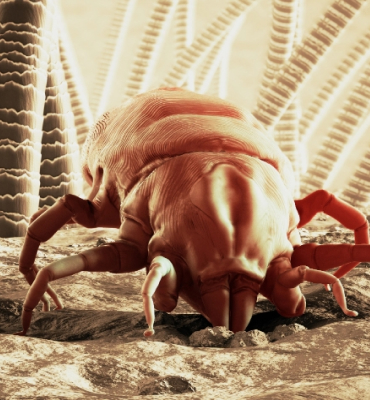
It starts with an itchy nose. Then come the headaches, the scratchy throat and, of course, the relentless sneezing.
Allergies can make home life really unpleasant, and one of the worst triggers for these reactions isn’t what you’d expect.
Meet the humble dust mite, the tiny monsters that may be behind your allergic symptoms.
What are dust mites?
Dust mites are found in every home, regardless of how tidy the house is kept.
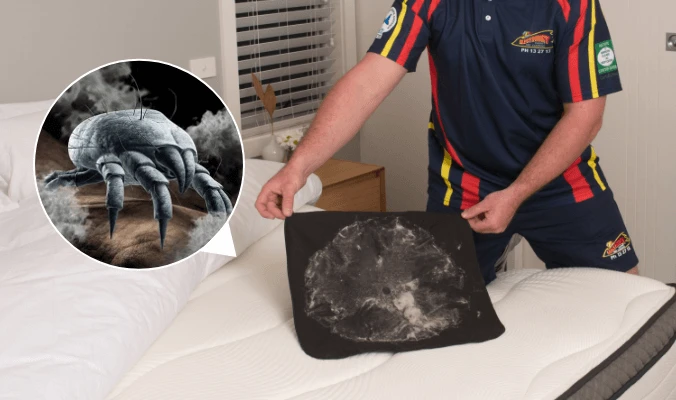
They are microscopic in size and actually classed as arachnids. Dust mites get their name because they feed off organic material, such as dead skin cells and microscopic food particles that accumulate in dusty areas.
You can find them all over the house, but what is their favourite hiding place? Your mattress. This is because your mattress is a dark, warm environment with a steady supply of their favourite food; the dead skin cells flake off our bodies while we sleep. Lounges are also a dust-mite favourite, especially if the lounge hides in a dark room.
Why do dust mites trigger allergies?
Dust mites excrete nearly twice their body weight each day. And it’s their faeces that contain bacteria, enzymes and proteins that cause an allergic reaction.
Dust mite faeces
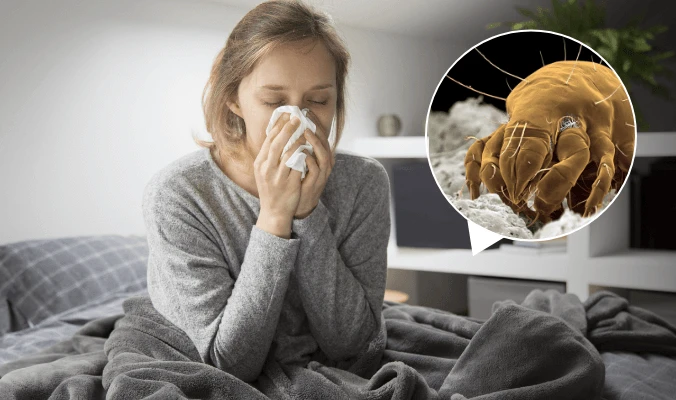
Each dust mite excretes 20 times a day, excreting two pellets of dust mite faeces at a time. These microscopic dust mite faeces pellets are 10–40 µm in size, which means that they are about the same size as pollens and will easily float around in the air if disturbed.
When airborne, these tiny particles enter our respiratory system and attach themselves to our bronchial passages and other soft tissues in the respiratory system. Those of us with allergies to dust mites then generate a histamine reaction, which causes hay fever symptoms, including sore throat, runny nose and watery eyes.
Allergic symptoms can increase over time as you continue to breathe in these particles. Dust mite excrement can also be particularly problematic for the around 2.7 million Australians who suffer from asthma.
Explore additional health risks associated with these dust mites in our featured article.

RECOMMENDED READING
Why Are Dust Mites So Harmful To People?8 Ways You Can Reduce Dust Mites’ Effect on Allergies
Luckily, there are a few really easy ways to minimise the impact these miniature creatures have on your overall health.
1. Let the sunshine in

Direct sunlight kills dust mites, so keep a bedroom window open during the day when you can. It’s also a good idea (if possible) to put your mattress outside in the sunshine for at least a couple of hours every few months.
If you can take your mattress outside, don’t hesitate to give it a good beating. Grab a broomstick and let all your frustrations out on your mattress. This will help dislodge the dead skin cells that dust mites feed off, in addition to dust mite excrement and the dust mites themselves.
2. Invest in a mattress protector
Invest in a good-quality mattress protector. Look for asthma and allergy-friendly mattresses or pillow covers.
3. Change bedding every week
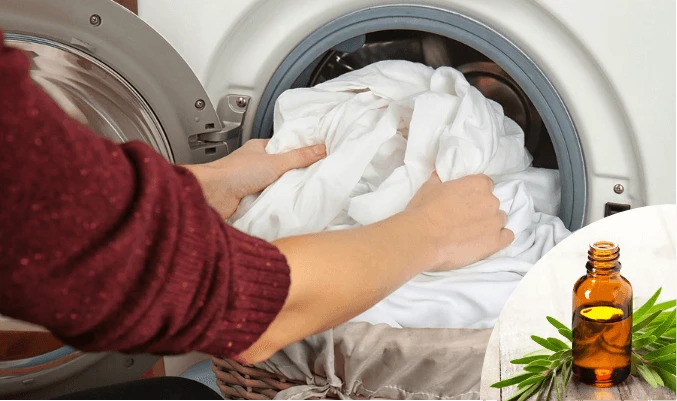
Wash bedding once a week in water that's at least 55 degrees. You should be washing any stuffed toys that reside in the bedroom once a week, too. If you can’t use hot water, use a washing product with essential oils such as tea tree or eucalyptus, which can treat dust mites in cold water.
4. Keep humidity low
Keep the humidity in your home below 50%. You can do this by using your exhaust fans while cooking and showering, fixing any leaking pipes around the house, using a dehumidifier, using your air conditioner’s dry mode, and remembering to dry your laundry outside.
5. Make sure to vacuum
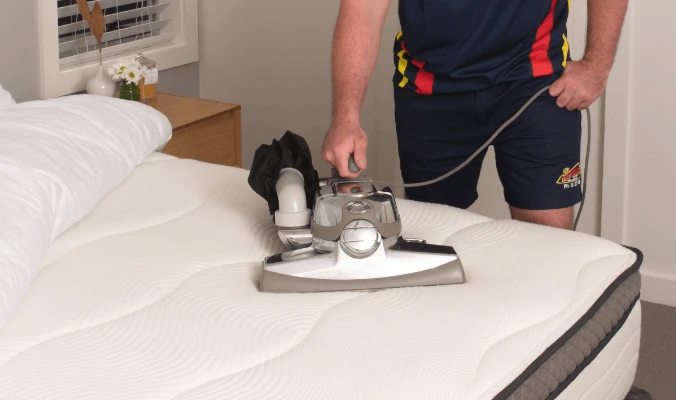
Vacuum everything!!! Vacuum carpets and soft furnishings weekly, using a high-efficiency particulate air (HEPA) filter vacuum cleaner if possible.
6. Consult an expert
You should speak with an allergist about allergy testing and long-term treatment if your symptoms are severe.
7. Have it professionally cleaned
An annual professional mattress clean is recommended, particularly when you are prone to allergies. An Electrodry clean will remove and then protect (up to 6 months) against dust mites and their excrement. Our service will also remove built-up dead skin that provides a food source for dust mites.
Prevent your home from becoming an ideal breeding ground for dust mites by following the insights shared in this article.

RECOMMENDED READING
How to Keep Your House from Being A Breeding Ground for Dust Mites